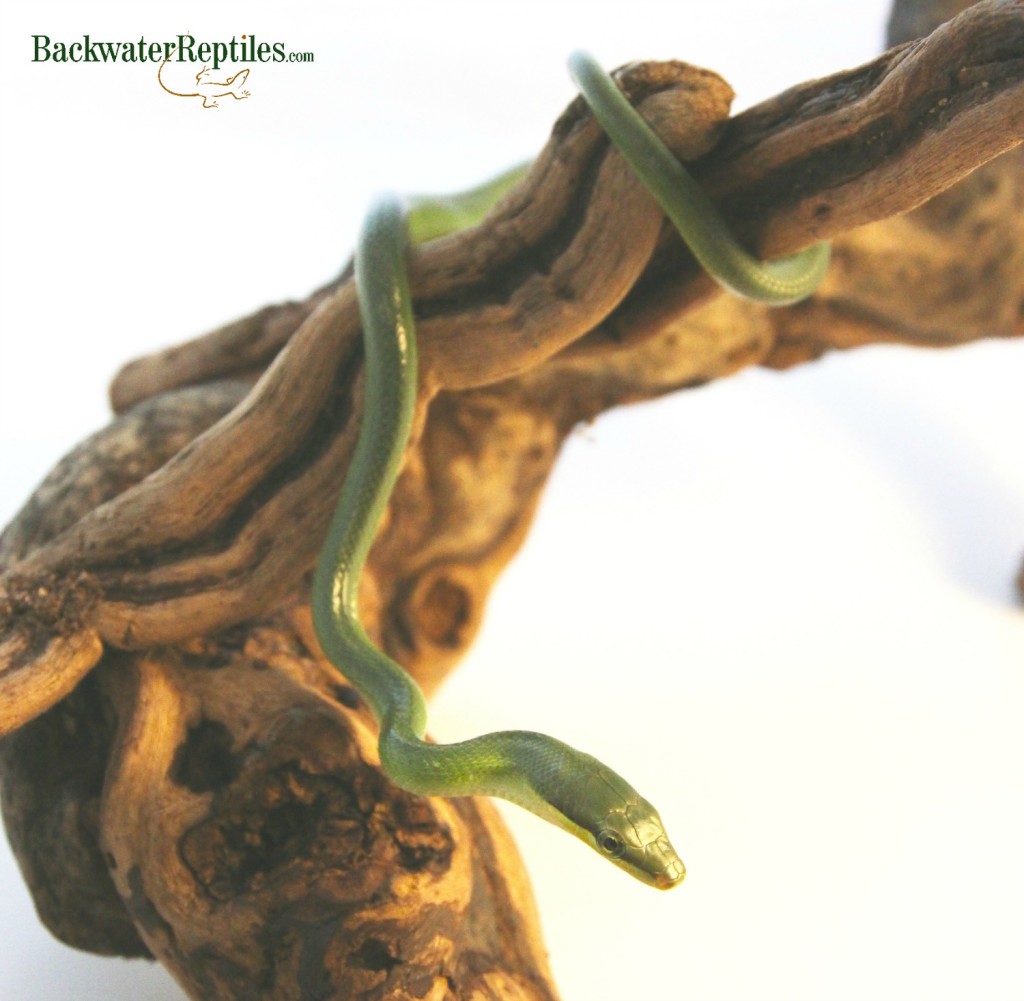Although snakes are very common pet reptiles, it’s not uncommon for them to refuse food from time to time. In fact, at Backwater Reptiles, one of the most commonly asked questions we get when it comes to reptile care is – how do I get my pet snake to eat?
So, if you’ve ever struggled with a picky eater or are currently trying to get your snake to eat, continue reading to learn what tips and tricks we use at Backwater Reptiles to get our own snakes to eat regularly and healthily.
Live Prey vs. Frozen Prey
The biggest problem many snake owners seem to encounter is getting their snake to eat dead prey. In the wild, obviously snakes kill and eat live animals, so some snakes need to be taught that when you present them with a dead mouse, the mouse is meant to be eaten.

Many small animals that snakes eat in the wild (i.e. mice, gophers, rabbits, etc.) are mammals that create their own body heat. The key word here is heat. If your thawed frozen mouse is not warm enough, your snake might not recognize it as a food source.
In order to thaw and warm up a frozen mouse of any size, do NOT place it in the microwave. Ever. You will wind up having to clean mouse innards out of your microwave. Instead, thaw the mouse the same way you might a chicken breast. Place the mouse in warm water or run it under warm water until it is warm to the touch.
In addition to feeling warm, the mouse should also not be hard in the center. If the feeder mouse is hard or tough in the center when you squeeze it gently, it’s still frozen inside. This might not only deter your snake from eating it, but it can also create digestive issues down the line.
Throughout the years, we’ve also learned that some snakes just don’t like to eat thawed food. Maybe they fancy themselves food critics – who knows? But the only real way to feed a snake that refuses to eat thawed food is to feed it living food.

Feeding your snake living mice, rats, or in some cases, even rabbits, can be distressing to both you, the owner, and the snake. Even though it’s part of life and the food chain, it can be tough to have to administer a living animal to another living animal. And as far as distress to the snake is concerned, if your snake doesn’t capture and eat the prey immediately, the prey can actually injure the snake! It’s not unheard of for unattended live mice left in a snake’s cage to actually gnaw on the snake and create wounds.
Ultimately, we highly recommend frozen food if your snake will eat it for both safety and convenience’s sake, but live prey is always an option should you have a very picky eater on your hands.
Color of Food
It has also been suggested that the color of the prey item makes a difference in the snake’s appetite.
Many mice obtained from pet stores for snake food are white, which is not a naturally occurring mouse color in the wild. Most wild mice are grey, brown, or some combination thereof.
This might not hold true for all snakes, but some owners swear that snakes will refuse white mice but eat naturally-colored ones with no problem.
Feeding Schedule & Feeding Tanks
If you can, we do recommend sticking to a schedule. Regularity will help the snake to know when it’s feeding time.
Most mature snakes should eat once every one or two weeks. Growing hatchlings should eat no less than once per week. Some will have large appetites and even consume multiple mice in one sitting.
Along with the schedule, you should create regularity in how the snake is fed. We highly recommend utilizing a feeding tank so that your snake will come to understand that being placed in the feeding tank means food will arrive shortly. This will not only encourage eating, but will also encourage your snake to strike less when you take it out to handle it because it won’t associate your hand with food every time the cage is opened.
Shedding Time
The only time that a snake will normally refuse food is when it is preparing to shed. Your snake will become dull and its eyes will become cloudy or opaque and this indicates that it will shed shortly.

Most snakes do not feed in the wild when they are preparing to shed because their eyesight is compromised. This behavior also holds true in captivity and is to be expected.
The bottom line is that you should withhold food until your snake has completed its shed because the snake will probably refuse the food anyway.
Snake Constipation
As silly as it seems, sometimes a snake can get constipated and will therefore decline food due to an upset stomach.
A good remedy for this is to give the snake a good soak. Prepare a lukewarm water bath and allow your snake to sit for anywhere from ten to fifteen minutes.
The moisture can sometimes help stimulate the snake to defecate, not to mention that nearly all reptiles enjoy a good soak.
Conclusion
There are many reasons why snakes sometimes won’t eat. Some are picky eaters and some might even be in pain without your knowledge.
We recommend trying out our tips and tricks and if your snake still won’t eat after three weeks of trying, it’s time to see the vet.
